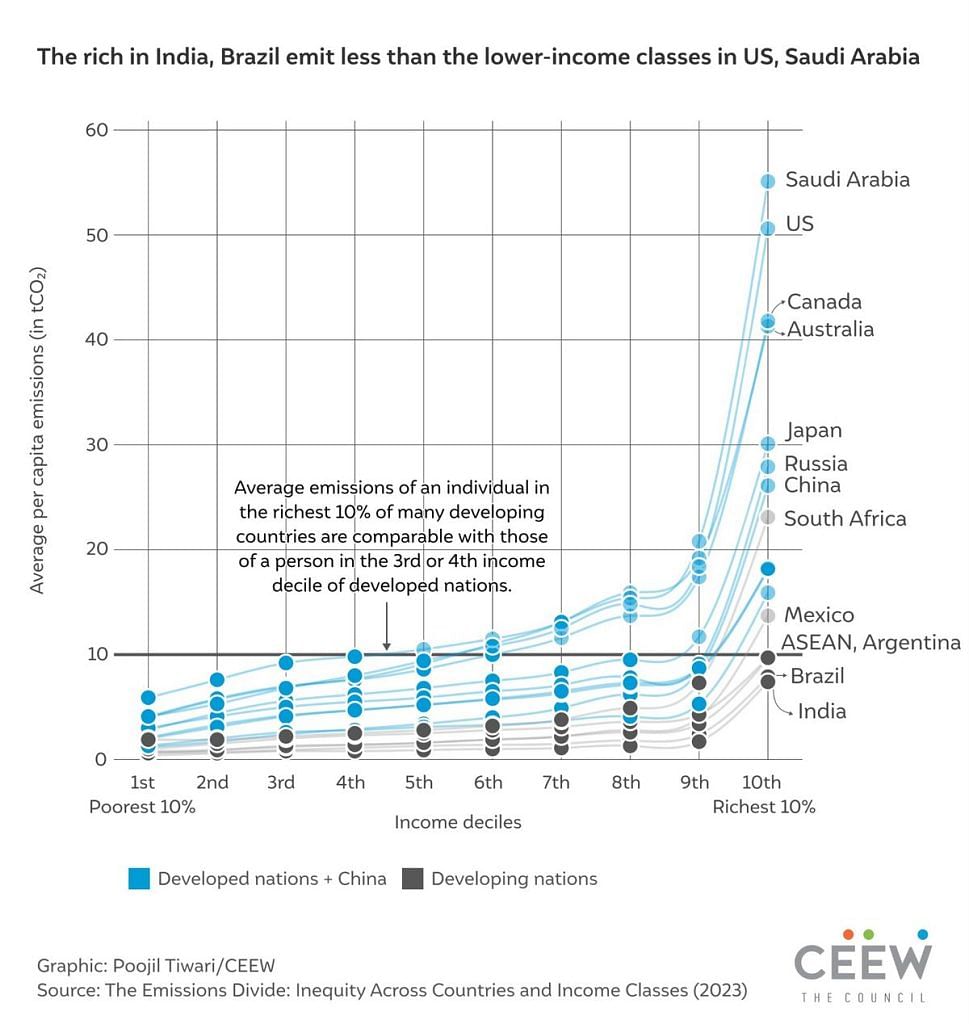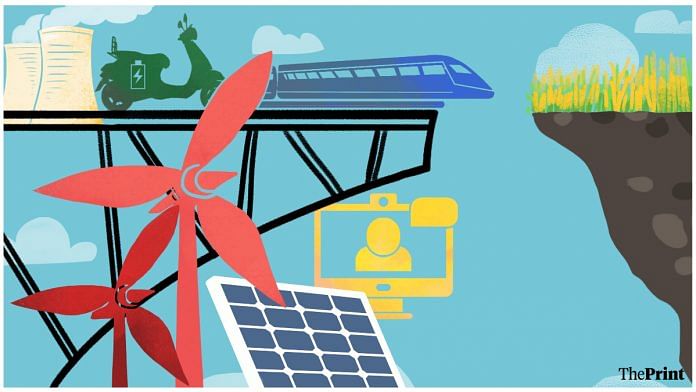As soon as COP28 started in Dubai, world leaders stood shoulder to shoulder, making promises on climate action and finance. But behind the scenes, there were clear fault lines. Developed economies, including the United States, Canada, and Australia, called for increased ambition and shared responsibility from emerging large emitter countries. But the bloc of Like-Minded Developing Countries (LMDC)—which includes India—voiced their opposition.
On Canada’s argument that there was no basis for “differentiated pathways” for emerging and developed economies, the LMDC contended that there was a good reason. “Recognising the sustainable lifestyle and consumption, developed countries should be taking a lead,” it said.
This shift to sustainable lifestyles was a sentiment that Prime Minister Narendra Modi also stressed in Dubai. He pointed out that many in India and the “global south” are bearing the burden of the emissions of a few.
Sustainable lifestyles are no longer a mere option. They must become a crucial pillar of climate action—and the emissions math shows why.
Also Read: Why India abstained from renewable energy pledge signed by 118 countries at COP28
Huge disparities in emissions
First and foremost, not everyone is equally responsible for increasing emissions.
Global carbon dioxide emissions reached an alarming all-time high of 36.3 billion tonnes in 2021, while climate impacts and disasters continue to wreck lives, livelihoods, and infrastructure. But the inequity in emissions between developed and emerging economies is glaring, shows a study released last month by the Council on Energy, Environment and Water (CEEW) on consumption-driven current emissions. The richest 10 per cent in Saudi Arabia, United States, Canada, Australia, Japan, Russia, and the European Union emit 2-8 times more than the richest 10 per cent in India. In fact, the richest 10 per cent in India emit less than most average earners in many developed economies.
The disparity is starker when it comes to the poorest populations. An individual in the bottom 10 per cent income bracket of Saudi Arabia, the US, or Australia generates 6 to 15 times more carbon emissions than an individual in the poorest decile of India, Brazil, and most countries in the ASEAN region. Study after study shows this massive emissions divide.

Second, this emissions divide is as disparate within most countries. The top income decile in any country emits about 2-5 times more than the second-highest decile. The emissions gap widens even more between the richest and the poorest. Among the selected countries in our analysis, the highest earners emit between 8 and 22 times more than their poorest compatriots, with China having the highest disparity.
While the emission intensity for the top decile in most countries declined between 2008 and 2018, their absolute emissions increased as their incomes rose. This underscores the need, beyond energy transition and climate mitigation measures, to rally for sustainable lifestyles, especially among those who can clearly afford it.
Also Read: Does China really care about climate change? Xi’s no-show at COP28 gives a hint
Developed countries must do more
A switch to sustainable lifestyles is a must, especially in developed countries. As a crucial pillar of climate action, this will create a demand-side push for businesses and economies to prioritise better choices for the planet.
Our study found that if the richest 10 per cent of developed economies and China were to embrace sustainable lifestyles and reduce their emissions by half, they would be able to save more than 3.4 billion tonnes of carbon dioxide annually (based on 2019 data). This potential saving surpasses India’s total CO2 emissions for the same year by 40 per cent, highlighting the considerable impact of these actions on a global scale. Notably, even after this reduction, the richest in these countries would still emit nearly double their current national average.
Further, a carbon tax on top emitters should be introduced to discourage highly carbon-intensive consumption patterns. According to the International Monetary Fund (IMF), a global carbon price of approximately $75 per tonne of carbon dioxide emitted is necessary to achieve sufficient emission reductions and maintain global warming below the 2°C threshold.
In addition, our analysis indicates that a carbon tax of $75 per tonne on the highest income decile in select developed countries and China could generate an annual revenue of more than $500 billion. This amount is 1.7 times the estimated international adaptation finance required for developing economies until 2030, and could fund their clean technology and adaptation activities.
As the G20 president this year, India drew consensus from the world’s major economies on mainstreaming Lifestyles for Sustainable Development (LiFE). The onus now lies with COP to recognise its power to reduce the impacts of climate change, and to hold developed economies accountable for their actions and move towards mainstreaming sustainable lifestyles.
However, even after one week of negotiations, the draft of this year’s Global Stocktake remains undecided on inequity in emissions and historical responsibility. Until these inequities are called out and addressed, private jets will keep landing at COP with minimal accountability.
Pallavi Das is programme lead and Chetna Arora is research analyst at the Council on Energy, Environment and Water (CEEW). Views are personal.
(Edited by Asavari Singh)



